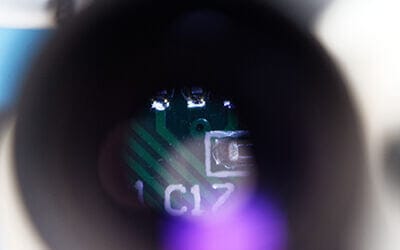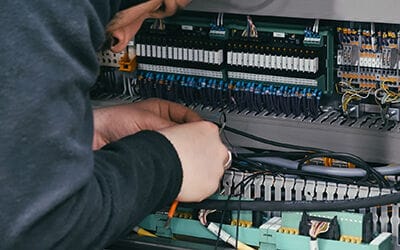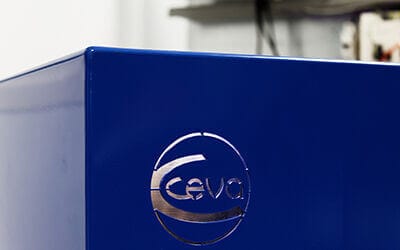
Data Management System: all information in one place
Real-time access to hatchery data and historical analysis of data via web portal
Data Collection and Analysis at the hatchery
Utilizing data collection and analysis is a powerful means to enhance hatchery performance and streamline decision-making processes. Contemporary hatchery equipment and services enable the acquisition of data and facilitate continuous monitoring of essential metrics, resulting in more informed decision-making.
Although global analyses can offer a snapshot of a hatchery's status at a specific moment, the genuine value of data analysis lies in establishing ongoing and continuous monitoring of key indicators. This approach helps obtain a global understanding of how critical parameters evolve over long durations. The capacity for continuous monitoring empowers hatchery managers to promptly identify deviations and take corrective actions.
This data analysis is indispensable when critical decisions need to be made, such as those related to hatchery investments or modernization initiatives. Present-day hatchery technologies, encompassing automation and vaccination equipment, are well-equipped to capture and transmit data in real time.
The ability to organize chick placement to the farm in advance is enhanced by receiving live updates from the chick processing room. Notifications regarding the in-ovo vaccination machine's recent cleaning cycle, conducted a day earlier, allow hatchery managers to quickly implement necessary measures, and minimize the potential impact of contamination.
Exemplary Case: Monitoring Contamination in Hatcheries
A good illustration of the substantial benefits from proactive data analysis is the monitoring of hatching egg quality. It is acknowledged that as a flock ages, eggshells become more porous and thinner, rendering eggs more vulnerable to contamination and the production of problematic eggs. Late embryo mortality rates rise, while hatchability and chick quality levels decline. To address this issue, recent advancements in candling technology, for example with LaserLife, have been developed. This technology mitigates these challenges by identifying and eliminating, at transfer time, a broader range of eggs compared to conventional candling methods. It now enables the identification of middle-dead embryos, late-dead embryos, and contaminated eggs during transfer, in addition to infertile and early dead embryos. The elimination of dead embryos and contaminated eggs during the transfer process leads to reduced contamination within the hatchers, resulting in improved performance during hatching, translating to better hatchability, chick quality...
By automatically collecting this data through equipment and bringing it to analysis, hatchery managers can make informed decisions to enhance outcomes.
Sustained Monitoring
By leveraging the data collected through automation devices, hatchery managers can reduce the number of hatching eggs falling into undesirable categories, leading to nearly immediate improvements in field performance. The collection of data equips companies with accurate reference points for the hatchery's production processes. This serves as a competitive advantage that enables hatcheries to remain at the forefront of market trends.
Enhancing Hatchery Efficiency with Data Management Systems
Optimizing Hatchery Operations
In the modern hatchery environment, data management systems play a crucial role in optimizing operations. By integrating real-time data access and historical analysis, hatchery managers can make informed decisions that enhance productivity and efficiency. These systems provide a centralized platform where all critical information is accessible, ensuring that every aspect of the hatchery's performance is monitored and analyzed.
Real-Time Monitoring and Alerts
One of the key benefits of advanced data management systems is the ability to receive real-time updates and alerts. This feature is particularly valuable for monitoring equipment status and environmental conditions within the hatchery. For instance, immediate notifications about temperature fluctuations or equipment malfunctions allow for swift corrective actions, minimizing potential disruptions and ensuring optimal conditions for egg incubation and chick development.
Data-Driven Decision Making
The continuous collection and analysis of data empower hatchery managers to make data-driven decisions. By tracking key performance indicators (KPIs) over time, managers can identify trends and patterns that inform strategic planning. This approach not only improves day-to-day operations but also supports long-term goals such as investment in new technologies or expansion of hatchery facilities.
Improving Hatchability and Chick Quality
Advanced data analysis tools enable the identification of factors that impact hatchability and chick quality. By closely monitoring parameters such as egg quality, incubation conditions, and chick health, hatchery managers can implement targeted interventions to improve outcomes. For example, adjusting incubation temperatures based on real-time data can enhance hatch rates and produce healthier chicks.
Ensuring Compliance and Traceability
In an industry where compliance with regulatory standards is paramount, data management systems provide the necessary tools for ensuring traceability and accountability. Detailed records of every stage of the hatchery process, from egg collection to chick placement, help maintain high standards of biosecurity and quality control. This traceability is essential for meeting industry regulations and building trust with customers.
Data Collection and Analysis at the hatchery
Utilizing data collection and analysis is a powerful means to enhance hatchery performance and streamline decision-making processes. Contemporary hatchery equipment and services enable the acquisition of data and facilitate continuous monitoring of essential metrics, resulting in more informed decision-making.
Although global analyses can offer a snapshot of a hatchery's status at a specific moment, the genuine value of data analysis lies in establishing ongoing and continuous monitoring of key indicators. This approach helps obtain a global understanding of how critical parameters evolve over long durations. The capacity for continuous monitoring empowers hatchery managers to promptly identify deviations and take corrective actions.
This data analysis is indispensable when critical decisions need to be made, such as those related to hatchery investments or modernization initiatives. Present-day hatchery technologies, encompassing automation and vaccination equipment, are well-equipped to capture and transmit data in real time.
The ability to organize chick placement to the farm in advance is enhanced by receiving live updates from the chick processing room. Notifications regarding the in-ovo vaccination machine's recent cleaning cycle, conducted a day earlier, allow hatchery managers to quickly implement necessary measures, and minimize the potential impact of contamination.
Exemplary Case: Monitoring Contamination in Hatcheries
A good illustration of the substantial benefits from proactive data analysis is the monitoring of hatching egg quality. It is acknowledged that as a flock ages, eggshells become more porous and thinner, rendering eggs more vulnerable to contamination and the production of problematic eggs. Late embryo mortality rates rise, while hatchability and chick quality levels decline. To address this issue, recent advancements in candling technology, for example with LaserLife, have been developed. This technology mitigates these challenges by identifying and eliminating, at transfer time, a broader range of eggs compared to conventional candling methods. It now enables the identification of middle-dead embryos, late-dead embryos, and contaminated eggs during transfer, in addition to infertile and early dead embryos. The elimination of dead embryos and contaminated eggs during the transfer process leads to reduced contamination within the hatchers, resulting in improved performance during hatching, translating to better hatchability, chick quality...
By automatically collecting this data through equipment and bringing it to analysis, hatchery managers can make informed decisions to enhance outcomes.
Sustained Monitoring
By leveraging the data collected through automation devices, hatchery managers can reduce the number of hatching eggs falling into undesirable categories, leading to nearly immediate improvements in field performance. The collection of data equips companies with accurate reference points for the hatchery's production processes. This serves as a competitive advantage that enables hatcheries to remain at the forefront of market trends.
Enhancing Hatchery Efficiency with Data Management Systems
Optimizing Hatchery Operations
In the modern hatchery environment, data management systems play a crucial role in optimizing operations. By integrating real-time data access and historical analysis, hatchery managers can make informed decisions that enhance productivity and efficiency. These systems provide a centralized platform where all critical information is accessible, ensuring that every aspect of the hatchery's performance is monitored and analyzed.
Real-Time Monitoring and Alerts
One of the key benefits of advanced data management systems is the ability to receive real-time updates and alerts. This feature is particularly valuable for monitoring equipment status and environmental conditions within the hatchery. For instance, immediate notifications about temperature fluctuations or equipment malfunctions allow for swift corrective actions, minimizing potential disruptions and ensuring optimal conditions for egg incubation and chick development.
Data-Driven Decision Making
The continuous collection and analysis of data empower hatchery managers to make data-driven decisions. By tracking key performance indicators (KPIs) over time, managers can identify trends and patterns that inform strategic planning. This approach not only improves day-to-day operations but also supports long-term goals such as investment in new technologies or expansion of hatchery facilities.
Improving Hatchability and Chick Quality
Advanced data analysis tools enable the identification of factors that impact hatchability and chick quality. By closely monitoring parameters such as egg quality, incubation conditions, and chick health, hatchery managers can implement targeted interventions to improve outcomes. For example, adjusting incubation temperatures based on real-time data can enhance hatch rates and produce healthier chicks.
Ensuring Compliance and Traceability
In an industry where compliance with regulatory standards is paramount, data management systems provide the necessary tools for ensuring traceability and accountability. Detailed records of every stage of the hatchery process, from egg collection to chick placement, help maintain high standards of biosecurity and quality control. This traceability is essential for meeting industry regulations and building trust with customers.


